Illusionists study magic that creates confounding mirages, shimmering spectacles, and phantasmal apparitions designed to befuddle the senses. They can create realities out of nothing, attack their foes’ mental fortitude, and confuse the memories of witnesses.
Whether you’re out for a few entertaining party tricks or looking to dominate the world through subtle deceptions, it pays to know what the School of Illusion is all about before you sign up. Here are 19 statistics on Illusion spells in Dungeons and Dragons 5e:
-
Illusion’s shortest spell is Greater Invisibility (30 words) and longest spell is Phantasmal Force (320 words).
-
With only 31 spells, Illusion is the least common school of magic in DnD 5e. Only 6.5% of the games spells’ fall into the School of Illusion.
-
Illusion has the longest average word count (168) and median word count (166). Funnily enough, Phantasmal Force ranks as the shortest spell to win the title of longest word count for a school of magic, meaning the high average and median word counts are a result of consistently high word counts across the school.
-
Wizards have access to 30 of Illusion’s 31 spells. The only spell they’re missing is Silence. Conversely, Paladins have no Illusion spells at all on their base class spell list.
-
Bards have the most Illusion-heavy spell list (14.18%). Clerics, Druids, Paladins, and Rangers all have spell lists that are comprised of sub-2% Illusion spells.
-
16 Illusion spells focus on Utility, more than half of the school’s spells.
-
Material components are required for 27 Illusion spells, but only 1 Illusion spell consumes the material component — Simulacrum.
-
The most expensive Illusion spell is also Simulacrum, which consumes 1,500 gp worth of powdered ruby. The only other Illusion spells with a component cost requirement are Programmed Illusion and Project Image (25 gp and 5 gp, respectively), but neither consume their material component
-
16 Illusion spells require concentration to maintain, and 4 Illusion spells can be cast as a ritual.
-
The Player’s Handbook started DnD 5e with 28 Illusion spells. Of Xanathar’s Guide to Everything’s 95 spells, only 3 were in the School of Illusion. Tasha’s Cauldron of Everything didn’t include any Illusion spells at all.
-
Illusion spells are all over the place in terms of range, but 120 feet is the most common. Illusion also has the only spell in DnD 5e with a range of “Special” — Dream, a fifth-level spell that only requires that the target be on the same plane of existence and sleeps.
-
10 Illusion spells are area of affect (AoE).
-
Illusion has 7 damaging abilities. 6 of them deal Psychic damage, and one (Illusory Dragon) deals elemental damage.
-
Wisdom is the most common saving throw forced by Illusion spells.
-
Illusion’s most-damaging spell is Mental Prison, a 6th-level Xanathar’s spell that deals an average of 27.5 psychic damage regardless of the target’s success or failure on an Intelligence saving throw.
-
71% of Illusion spells have a casting time of 1 action. 1 minute, at 16%, is the next most common casting time.
-
Illusion is the only school to have 0 instantaneous spells — pretty crazy for a game where 28% of the spells fall into this category. Instead, 1 minute durations are the most common for Illusionists, followed by a slew of other possible spell durations.
-
The School of Illusion only has one cantrip (Minor Illusion) and one ninth-level spell (Weird). Other than that, second-level Illusion spells are the stand-out, especially staples of the school like Invisibility, Blur, Mirror Image, Phantasmal Force, and Silence.
-
15 Illusion spells have been around since the first edition of Dungeons and Dragons:
Blur Nystul’s Magic Aura Color Spray Phantasmal Force Fear Phantasmal Killer Hallucinatory Terrain Programmed Illusion Hypnotic Pattern Project Image Invisibility Silence Magic Mouth Simulacrum Mirror Image
Methodology
All data is taken from the three main fifth edition rulebooks (Player’s Handbook, Xanathar’s Guide to Everything, and Tasha’s Cauldron of Everything).
Word counts do not include the spell name, level, school, casting time, range, components, or duration. Nor do they include the stat blocks of any summoned or conjured creatures. They also do not include the words “At Higher Levels” for spells that can be upcast. Word counts do, however, include all text included in charts, including numbers.
One statistic from above is somewhat subjective: spell types (damage, heal, buff, debuff, utility). I tried to take a common-sense approach to what category each spell falls into and limited each spell to two types. Hopefully, these spell classifications at least prove useful for relative comparisons between spell schools if nothing else.
As a final disclaimer, I did all of this by hand, so there are almost certainly some small errors in my work — I’m only human.
How to Use Illusion Spells in DnD 5e
How to use Minor Illusion
How to use Disguise Self
How to use Invisibility
How to use Mirror Image
How to use Phantasmal Force
How to use Shadow Blade
How to use Silence
How to use Hypnotic Pattern
How to use Greater Invisibility
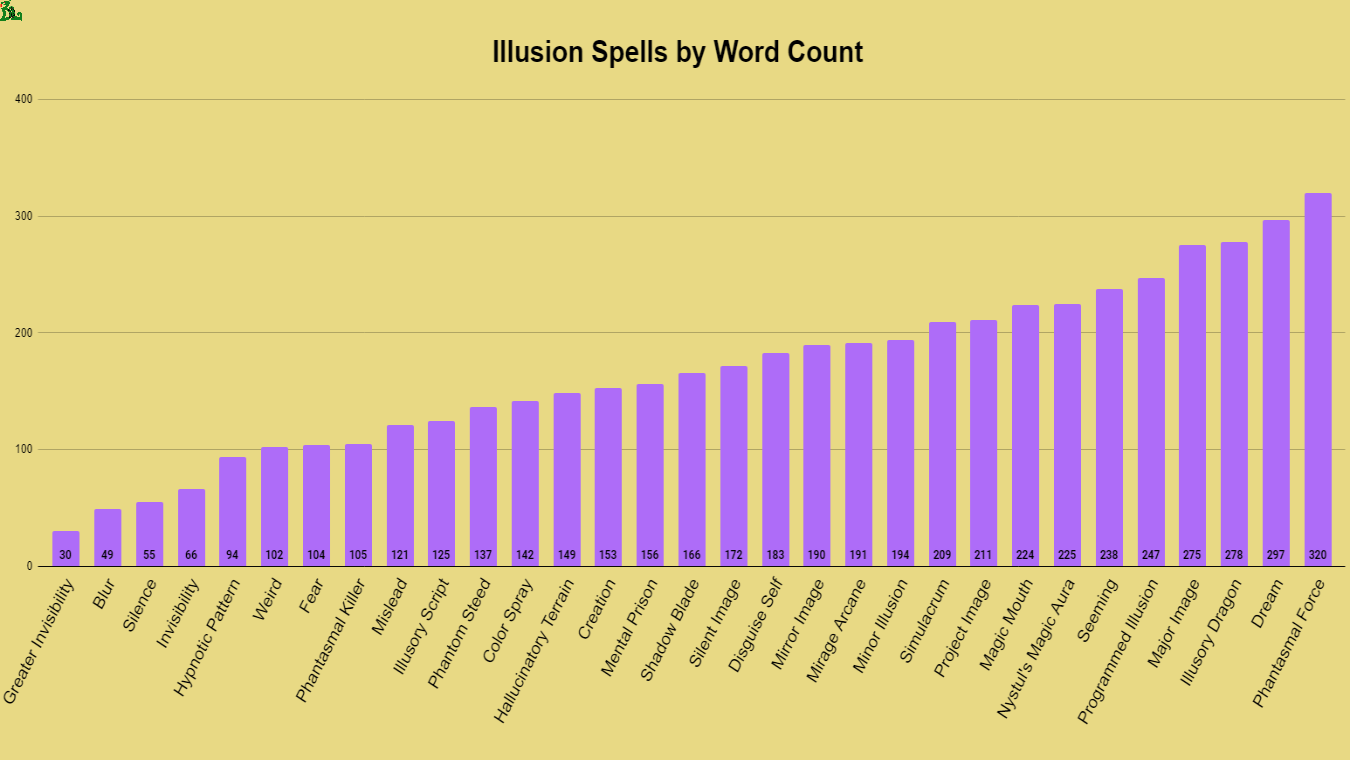
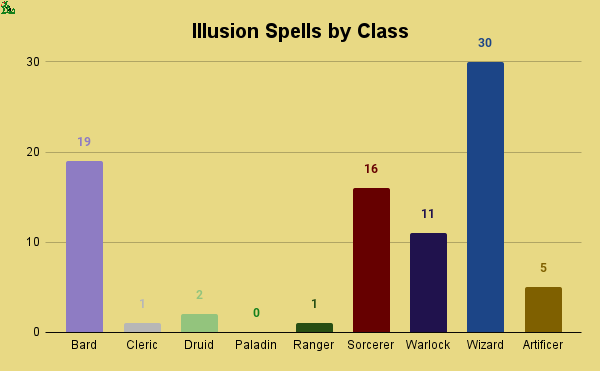
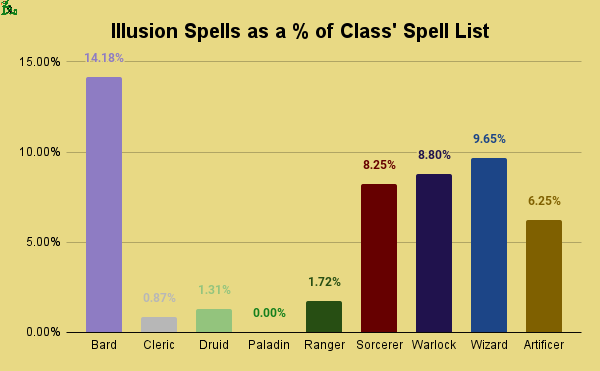
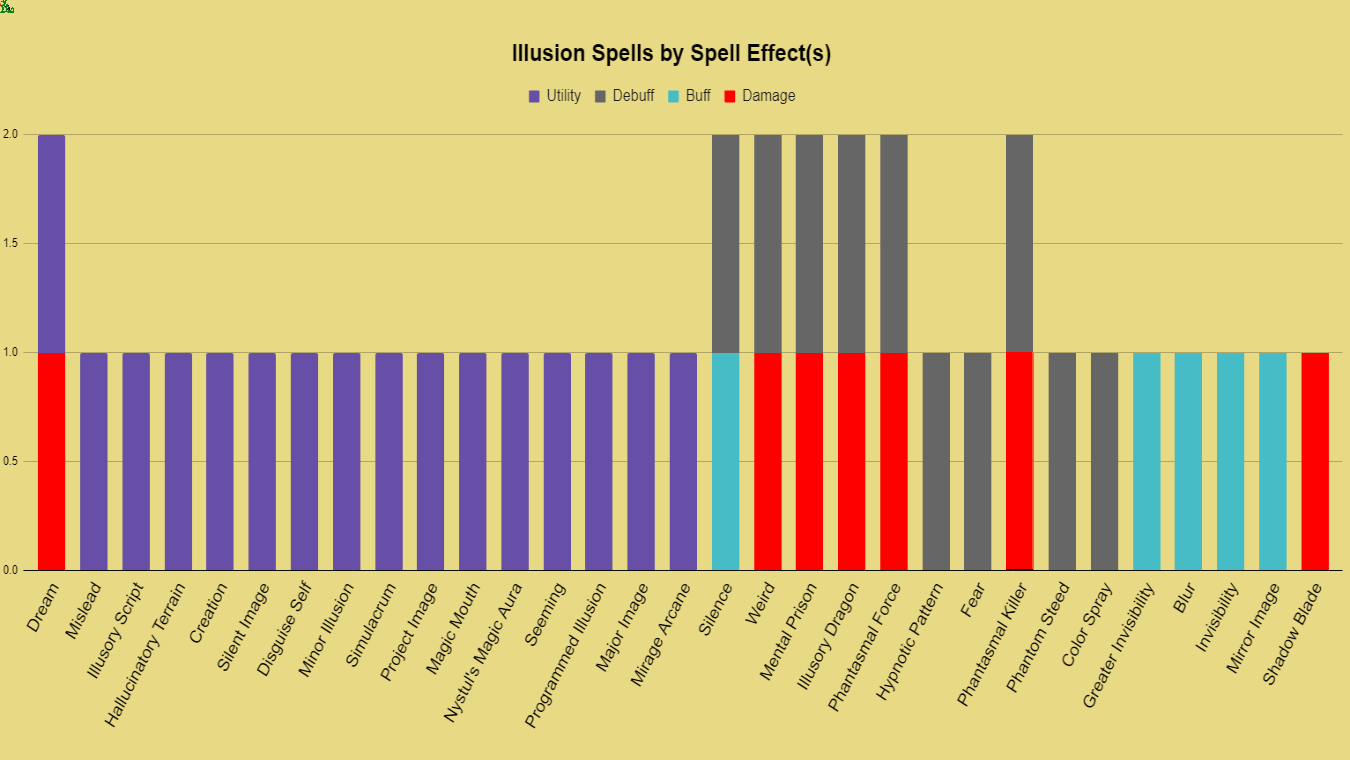
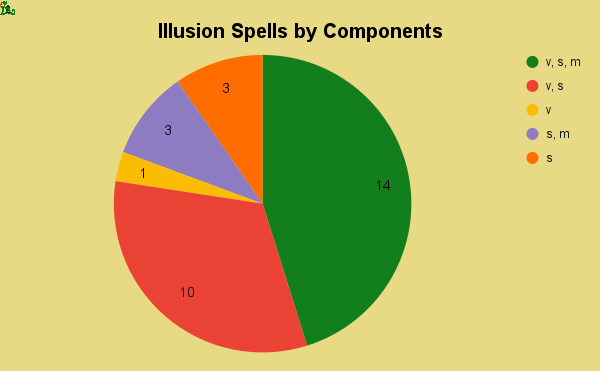
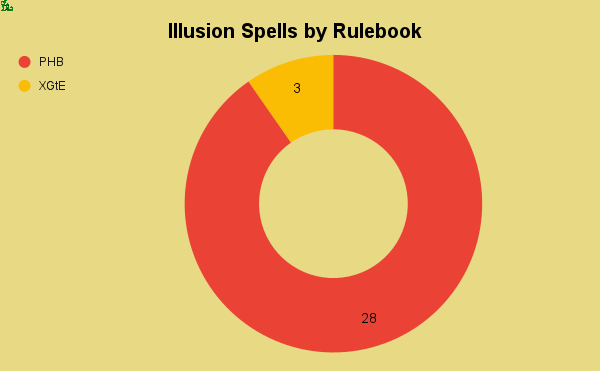
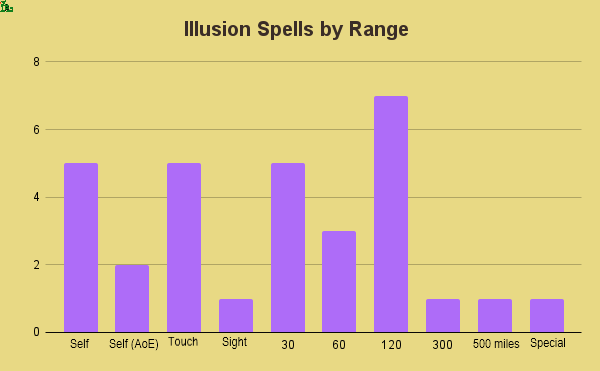
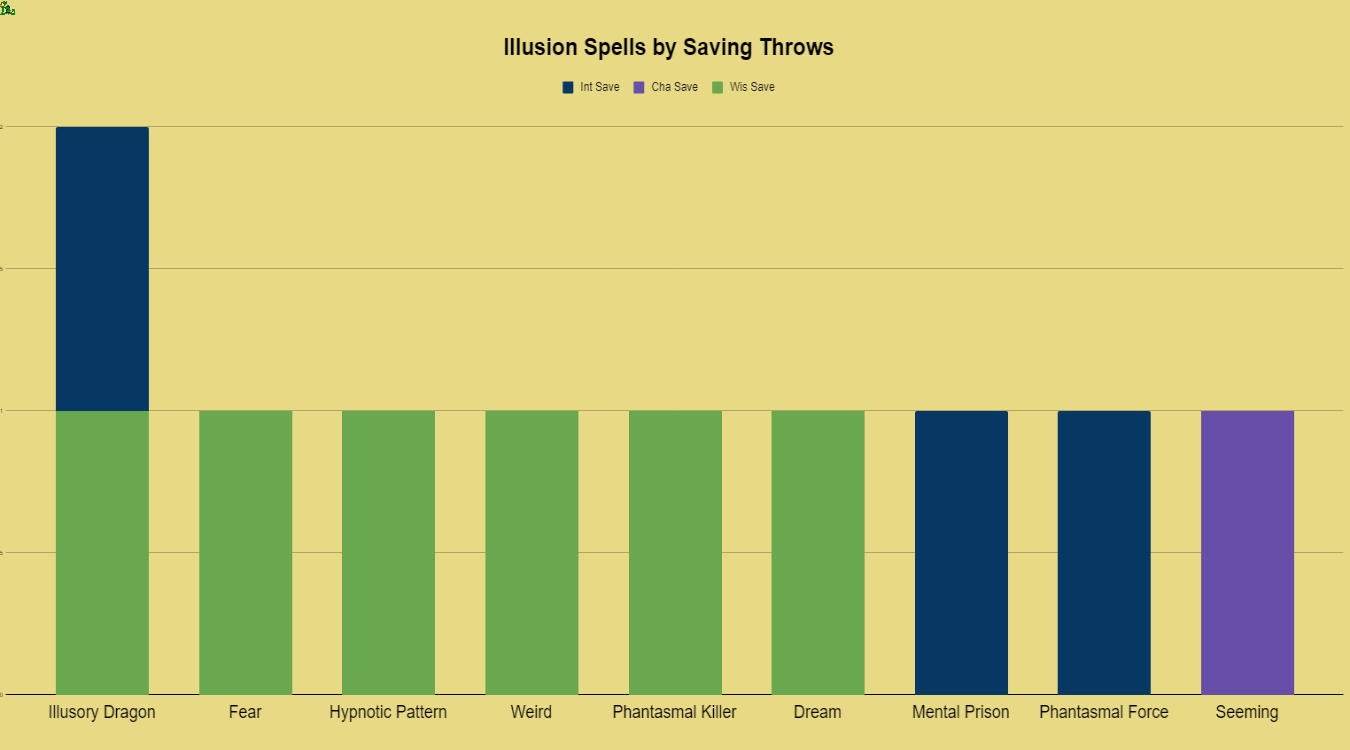
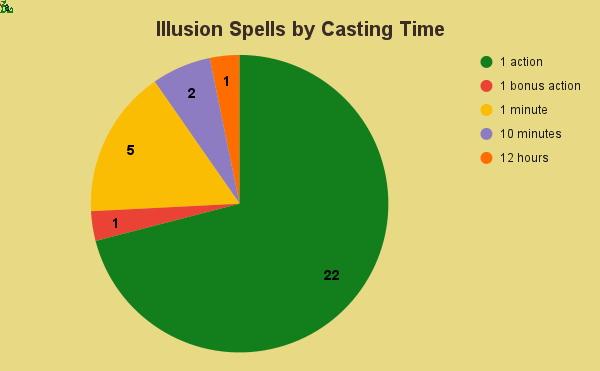
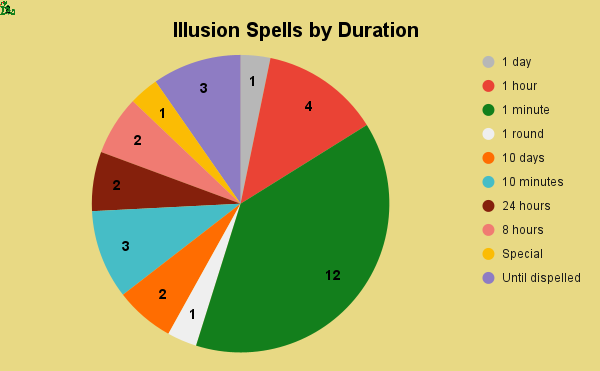
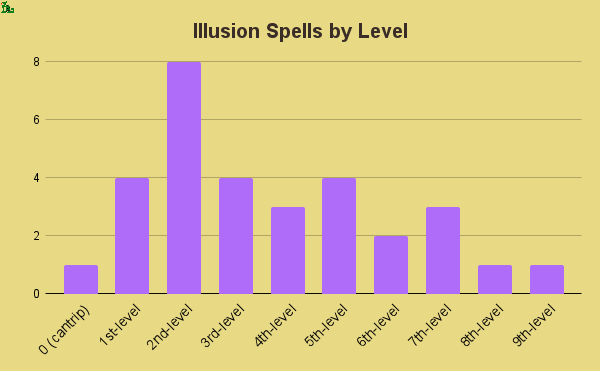
![Debuff Spells 5e [DnD Full List] dnd-ranger-casting-a-spell-on-spiders-5e](https://www.dndlounge.com/wp-content/uploads/2023/11/dnd-ranger-casting-a-spell-on-spiders-5e-300x169.webp)
![Healing Spells 5e [DnD Full List] dnd-elvish-druid-healing-human-fighter-5e](https://www.dndlounge.com/wp-content/uploads/2023/11/dnd-elvish-druid-healing-human-fighter-5e-300x169.webp)
![Buff Spells 5e [DnD Full List] dnd-tiefling-cleric-blesses-her-party-5e](https://www.dndlounge.com/wp-content/uploads/2023/11/dnd-tiefling-cleric-blesses-her-party-5e-300x169.webp)
![AoE Spells 5e [DnD Area of Effect + Multitarget Spells] dnd-dwarvish-wizard-casting-meteor-swarm-5e](https://www.dndlounge.com/wp-content/uploads/2023/11/dnd-dwarvish-wizard-casting-meteor-swarm-5e-300x169.webp)